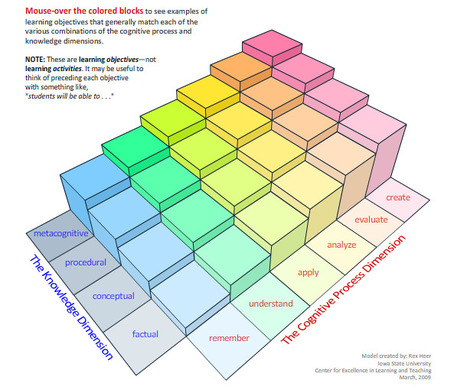Research and publish the best content.
Get Started for FREE
Sign up with Facebook Sign up with X
I don't have a Facebook or a X account
Already have an account: Login
Tech tools that assist all students to be independent learners & teachers to become better teachers
Curated by
Beth Dichter
 Your new post is loading... Your new post is loading...
 Your new post is loading... Your new post is loading...
|
|












GAU is, as me, in reprocessing and restructuring. I do believe that love and freedom will be created, but we have to be patient.
This is a really interesting look at Bloom's Revised Taxonomies. It's a fantastic way of integrating the Knowledge Dimension. I love this visual!